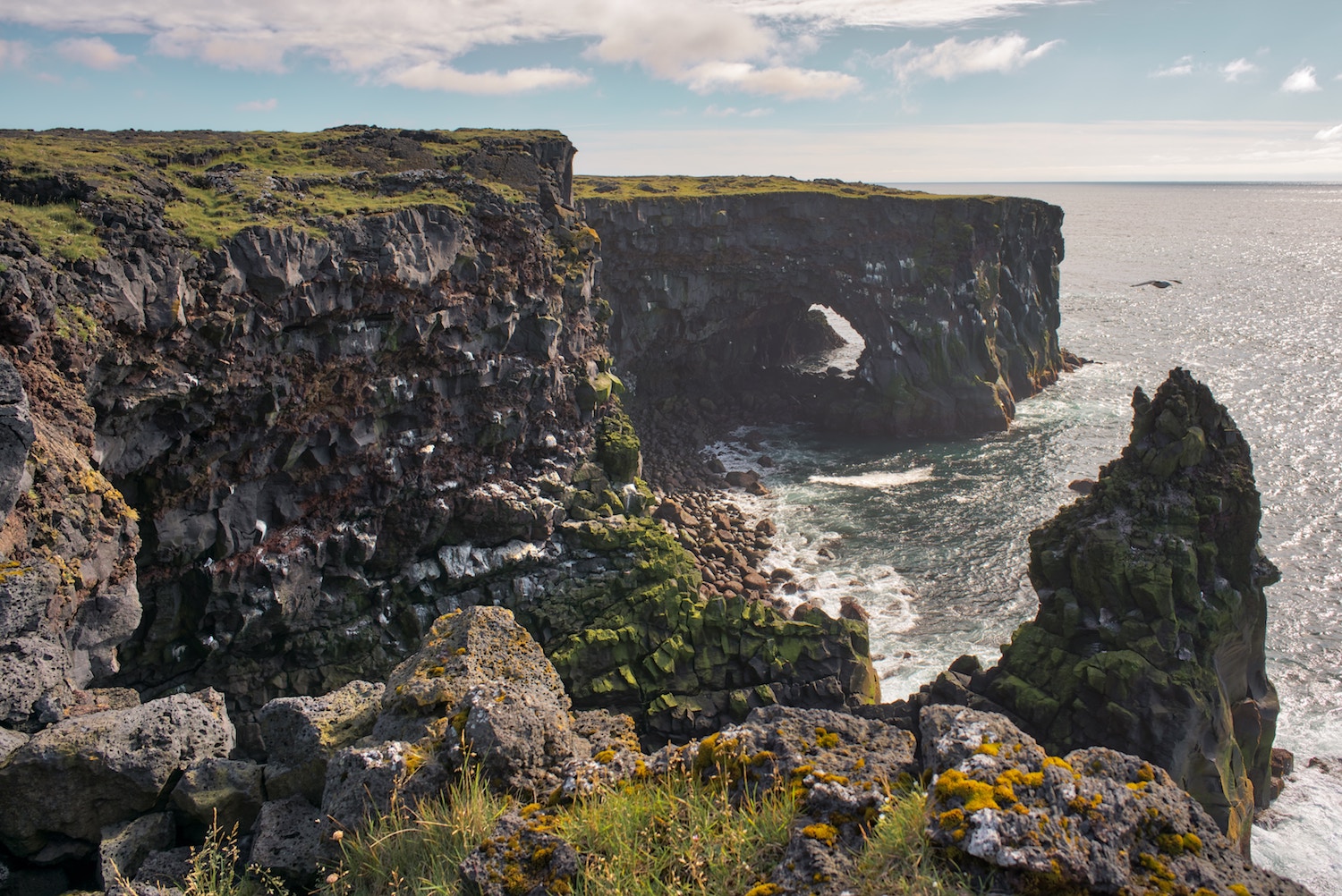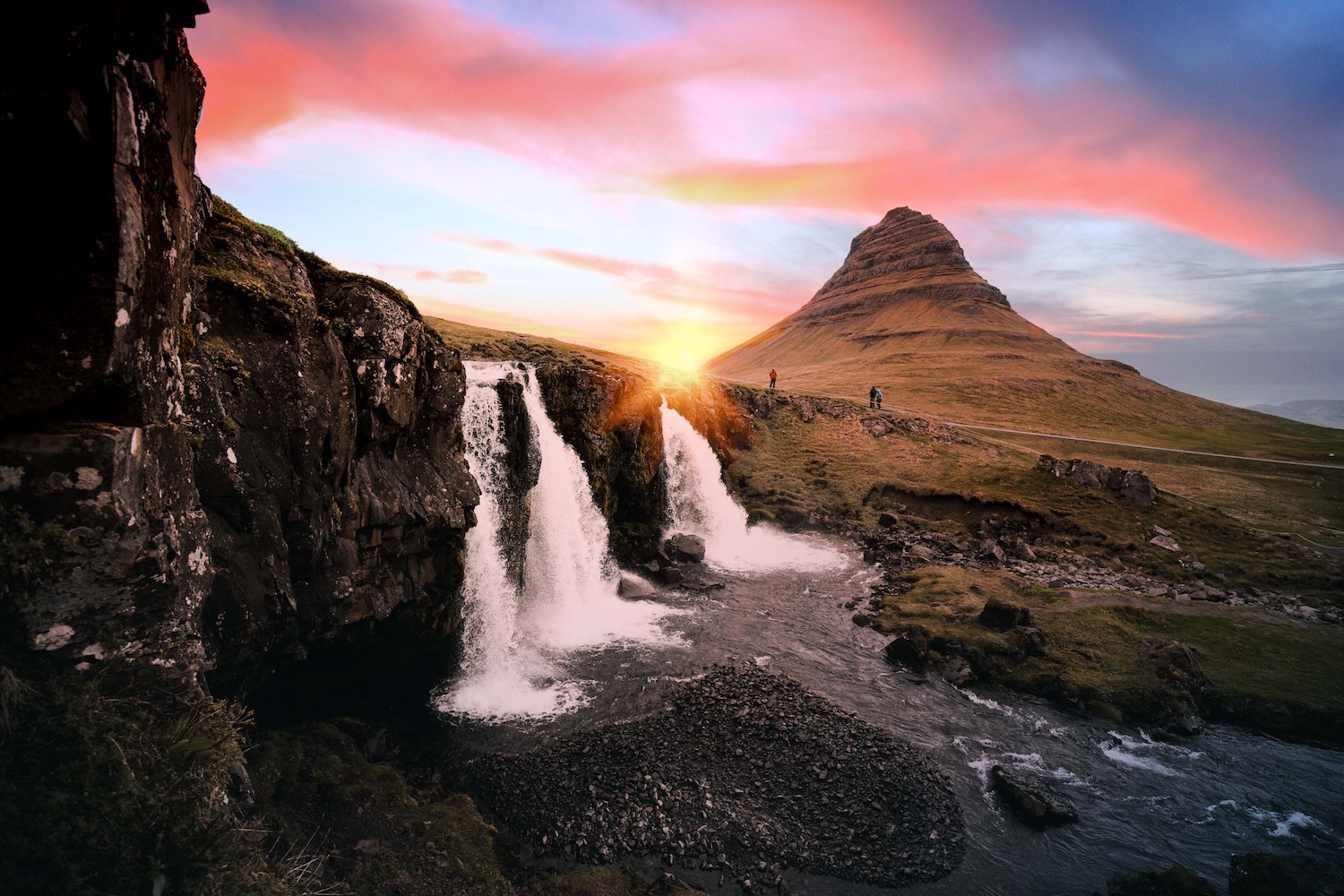Look beyond Reykjavik for the frozen beauty of west Iceland
With its flying horses and untamed fjords, west Iceland makes for the most magical winter getaway, writes Nicola Moyne

With its flying horses and untamed fjords, west Iceland makes for the most magical winter getaway, writes Nicola Moyne
Ronja’s piercing blue eyes lock with mine, warily. They may be half hidden behind a shaggy, softly sun-bleached chestnut-brown fringe, but there’s no mistaking the intensity of that stare: she’s monitoring my every move. I can feel her scanning my soul. ‘She’s everyone’s favourite,’ laughs Gudmar while he tacks up a young ebony-black stallion and flicks a thick head of black curls out of the way, unconsciously mirroring his own trusty steed. ‘She must be 14 or 15 years old now, but she’s a beauty; people form very close bonds with her.’
Ronja (rolling heavy on the ‘r’) is one of 100 Icelandic horses owned by Gudmar and his Chicago-born wife, Christina, at Hestaland - a farm set in 240 acres of barren beauty slap bang in the middle of some of west Iceland’s most dramatic terrain - and I’m getting ready to saddle up and take a hack through its undulating peaks.
When you think of Iceland, you think of Vikings and folklore; sapphire-blue thermal lagoons and a dancing horizon of kaleidoscopic lights that ripple in waves across the inky winter skies. In the years since Eyjafjallajökull erupted in 2010 – carpeting Europe in a cloud of ash and flight-path chaos – the number of tourists hitting this volcanic isle for a hit of adventure has (if you’ll pardon the pun) quite literally exploded. In 2010, less than 500,000 people holidayed in Iceland. Now, that figure has shot to 2.3m. But it’s the country’s famous horses (not ponies) – with their magical fifth gait – that seem to be leading the charge for a more authentic Icelandic experience.
‘When you ride through the scenery on horseback, you’re seeing it exactly how the Vikings would have seen it; how the earth’s forefathers would have seen it,’ Gudmar, who grew up here in Borgarfjörður and has owned the farm for almost a decade tells me while we meander alongside a frozen river and drink in the views. Having worked with horses all his life, it was his dream to run Hestaland and live and work in the wilderness of the west. ‘There’s no where that makes me feel more alive,’ he laughs as Ronja shifts seamlessly from a canter into a traditional tolt – the smooth, four-beat lateral ambling gait unique to Icelandic horses. It feels like I’m flying.

I’m here in early March and the biting winter chill only adds to the shape-shifting terrain for which west Iceland is famed. Here, moss-sheathed lava fields lead to snow-draped mountains and creeping glaciers; rocky ranges are fringed with golden carpets of crisp grass and fine-sand beaches are scorched black by volcanic basalt. In short, it’s road-trip heaven, and I’m told you can comfortably explore the entire coastline by car in less than 14 days by my guide, Thor – who happens to be the proud owner of one of only three customised super trucks in the country. Comprising two Ford F 350s fused together, my ride for the week is a slick 4x4 reimagining of the limo; casual sightseeing this is not. But it hardly matters because there’s no one here. Just 40 minutes from the capital, Reykjavik, west Iceland’s empty roads and sense of wide, open space is startling. I begin a silent game for the car journeys: how long until we spot another vehicle on the road? I never count for less than seven minutes.
The next day, we set off for Snæfellsnes National Park peninsula, a 90km haven for the region’s wildlife, including puffins, fulmars and nesting kittiwakes, who I watch playfully dip and dance over the crashing crests beneath. This is the only National Park in Iceland that stretches to the sea, where spikes of ancient volcanic basalt rise from the salty depths of the North Atlantic like weathered Viking warrior returning home, tired but triumphant. The Lóndrangar sea-stack formations seen here are all that remain of a larger crater now surrendered to the raging swell below, and locals still cling to the lore that a community of elves dwell quietly here in the cliff’s dark coastal folds.
Celebrity news, beauty, fashion advice, and fascinating features, delivered straight to your inbox!
Inland lies the snow-dappled ranges of Snæfellsnes National Park, the layers of which weave their way through Iceland's geographical triumphs – heather-iced lava fields, wild black-sand beaches and the glacier-topped Snæfellsjökull volcano, which crowns the dramatic twists and turns of this gloriously quiet tourist trail. Towering over the region at 1,446m high, this majestic mountain was once believed to be the highest point in Iceland. Now, of course, you can reach its icy peak via Summit Adventure Guide’s high-tech Snowcat and, the following morning, as a whiteout gives way to clear, azure skies, I’m given the go-ahead to set off on foot for the shivering summit. It’s -15C outside, my hair seems to instantly freeze into Miss Havisham-like strands and the snow is almost waist-deep in places. It’s not for the faint-hearted. Yet, as a howling wind whips through the air around me and my guide, Gunnar, shouts at me for getting too close to the edge, I’m reminded of Gudmar’s words back at Hestaland: there really is nowhere that makes you feel more alive.

A heart-warming Icelandic playlist and thick hot chocolate powers us back up in the truck afterwards, as we drive 50 minutes north-east to Kirkjufell. With its whitewashed crown, you can see why this imposing peak was once named 'sugar top' by passing Danish sailors. Today, Kirkjufell is one of west Iceland's - if not the world's - most photographed natural landmarks, securing cameos in Game of Thrones; serving as an emblem of 'life beyond the wall''. Just out of shot, the Kirkjufellsfoss waterfalls roar, asserting aural authority, and a blanket of frozen lakes shimmer in the afternoon sun. The best bit? We’ve practically got the place to ourselves again. Aside from a few hardcore trekkers, touring road-trippers and tripod-wielding photographers, this part of Iceland is free of the horn-honking bus tours and army of nonchalant tourists. And it's all the more magical for it.
Back at my base, Hotel Husafell – which is all contemporary eco design, modern Icelandic art, organic toiletries, and chic Scandi furnishings – I hit the sexy ski-lodge style restaurant for salty ribbons of deliciously thin-cut beef carpaccio, before kicking back in the hotel’s natural geothermal pools. I’m busy admiring the dramatic mountain range backdrop when the heavens open and the softest polystyrene-esque sheet of snow starts to softly fall. There’s not another soul in sight; it’s just me, winter’s ethereal evening mist, and a chilled glass of fizzing prosseco. And in that moment, I really couldn’t love west Iceland, with its flying horses and untamed fjords, more.
To discover more about what west Iceland can offer, head to Visit West Iceland at west.is
The leading destination for fashion, beauty, shopping and finger-on-the-pulse views on the latest issues. Marie Claire's travel content helps you delight in discovering new destinations around the globe, offering a unique – and sometimes unchartered – travel experience. From new hotel openings to the destinations tipped to take over our travel calendars, this iconic name has it covered.